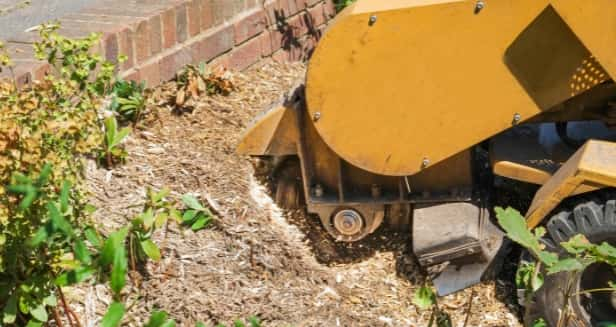A well-maintained garden isn’t just about what’s planted in the soil — it’s also about how light reaches those plants. Overgrown trees can block sunlight, suppress plant growth, and even cause dampness around the home. Regular tree trimming is one of the most effective ways to improve light access and support a healthier, more vibrant garden. At Mildenhall Tree Surgeons, we help homeowners across Mildenhall, Suffolk achieve better light levels and enhanced plant growth by trimming trees with expert care and attention.
This article explores how strategic tree trimming can transform your outdoor space, benefit your plants, and help maintain the long-term health of your trees.
Why Tree Trimming Supports Garden Wellbeing
Trees are an essential part of any garden, offering shade, structure, and habitat. However, when left unmanaged, they can overshadow borders, lawns, and beds — starving other plants of the sunlight they need to thrive. Strategic trimming lets you enjoy the best of both worlds: the beauty of mature trees and a brighter, healthier garden.
Benefits of improved light access through trimming:
- Encourages stronger, more even plant growth
- Reduces damp, moss, and algae caused by heavy shading
- Helps vegetable gardens and flower beds flourish
- Enhances drying and ventilation for patios and lawns
- Increases usable space beneath trees for seating or play
At Mildenhall Tree Surgeons, we assess each tree’s shape, density, and location to determine the best trimming strategy for light optimisation.
How Trimming Affects Tree and Plant Health
Trimming isn’t just about aesthetics or brightness — it plays a key role in overall tree health. Removing overcrowded, crossing, or poorly positioned branches encourages air circulation and reduces the risk of disease.
Proper trimming helps to:
- Remove dead or dying wood that harbours pests or decay
- Reduce the weight of heavy limbs that may split or break
- Improve airflow, reducing the chance of fungal issues
- Shape the tree for even growth and long-term stability
This not only protects your garden but ensures your trees remain strong and attractive year after year.
When and How Often to Trim Trees
The ideal trimming schedule depends on the tree species, age, location, and growth rate. In general, most garden trees benefit from a light trim every 1–3 years.
Best practices include:
- Winter or early spring for structural shaping
- Late summer for species that bleed sap in spring
- Avoiding active nesting seasons for birds (usually March–August)
- Regular monitoring for fast-growing trees like sycamore or willow
We recommend having your garden assessed by a qualified arborist to determine the best timing and frequency for trimming.
Tree Trimming Techniques That Improve Light Access
At Mildenhall Tree Surgeons, we use several trimming techniques designed to maximise light without compromising the health or appearance of the tree.
Common methods include:
Crown Thinning
Selective removal of internal branches to reduce canopy density, allowing more dappled light to filter through.
Crown Lifting
Raising the lower canopy by removing low-hanging branches to open up space beneath the tree and let more light reach the ground.
Crown Reduction
Reducing the height or spread of a tree to limit over-shading of nearby beds, patios, or windows.
Formative Pruning
For younger trees, shaping the growth structure early helps avoid problems and promote balanced light distribution as the tree matures.
Every job is approached with care, following British Standards (BS3998) to ensure that the tree remains healthy and resilient after trimming.
Signs Your Garden May Need Tree Trimming
If your outdoor space is looking tired despite your best gardening efforts, the issue might not be your plants — it could be a lack of light caused by unchecked tree growth.
Warning signs include:
- Patchy or stunted grass growth under trees
- Excessive moss or damp patches on paving or soil
- Poor crop yields in vegetable beds or greenhouses
- Lower branches brushing walls, fences or garden furniture
- Shaded areas that remain cold or wet after rain
If you notice these symptoms, it may be time to have your trees professionally assessed.
Why Choose Mildenhall Tree Surgeons?
At Mildenhall Tree Surgeons, we provide reliable, expert tree trimming services across Mildenhall, Suffolk. We’re passionate about helping clients create healthier gardens while protecting the integrity of their trees.
Here’s what we offer:
- Fully qualified and insured tree surgeons
- Local knowledge of species common to Suffolk gardens
- Careful, clean work that respects your garden space
- Advice on planting, pruning schedules, and long-term maintenance
- Eco-conscious green waste disposal
We tailor our approach to your needs — whether you need a light trim to brighten up a flowerbed or more substantial crown thinning for larger trees.
Conclusion
Well-trimmed trees can make a significant difference to the health and usability of your garden. By improving light levels and reducing unwanted shade, you give your plants, lawn, and outdoor space the best chance to thrive. With the right professional guidance, trimming doesn’t just improve the look of your garden — it protects your trees and enhances the entire landscape.
If you’re in Mildenhall, Suffolk and want to boost the health and light levels in your garden, contact Mildenhall Tree Surgeons today. We offer professional tree trimming services that deliver both beauty and long-term benefit.
Call us on: 01638 597 989
Click here to find out more about Mildenhall Tree Surgeons
Click here to complete our contact form and see how we can help with your tree care needs.

